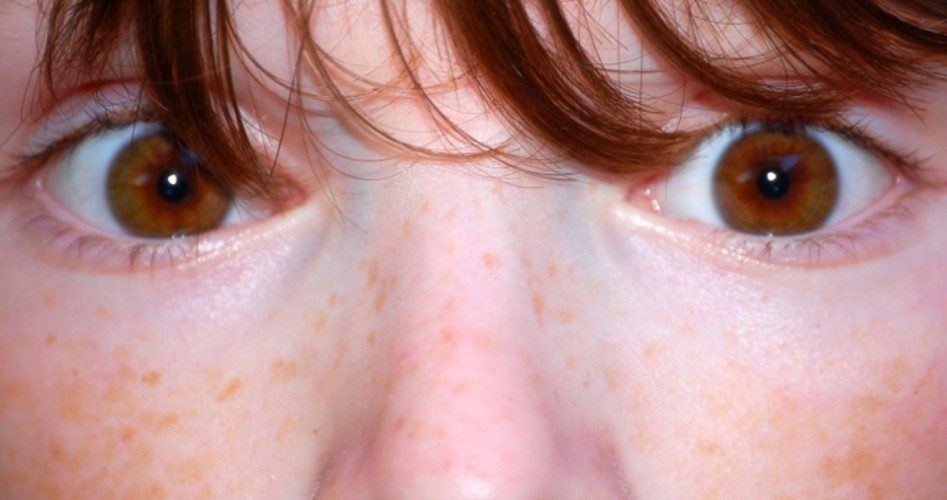
What do you say about a situation in which an elementary-school teacher forces children to view nude “art” despite their objections and without parental approval? If you’re like too many Internet commenters responding to just such a story, you call the children ignorant brats and snowflakes and label the school puritanical for taking action against the teacher.
In fairness to the commenters, the story was misreported. After the firing of Mateo Rueda — until recently an art teacher at Lincoln Elementary School in Hyrum, Utah — the mainstream media portrayed him as an innocent victim of unenlightened prudes. But local parents I interviewed told a different story.
As I reported yesterday, Rueda showed certain inappropriate pictures — one displaying full frontal nudity — to a fifth-grade class after having gotten complaints about them from a sixth-grade class. The parents say he forced children to view the images even after they objected, ostensibly as part of a lesson on “color usage.” One parent reported that Rueda dismissed the students’ concerns, saying that the images “were not offensive to him.”
If you hear him tell the story now, though, he had no idea the images were there and removed them as soon as he could. As the Herald Journal reported, “Asked if he thought the nudes were appropriate for the sixth-graders in his class, Rueda said he did not. ‘This is not material at all that I would use. I had no idea,’ he said.” Parent Benji Christensen explained this simply: The “teacher is most definitely lying,” he stated.
What is true is that Rueda apparently has no idea — what pornography is. Unfortunately, the comments I’ve seen in his defense indicate he has a lot of company. So let’s examine the matter.
Let’s first acknowledge that there’s nudity — and then there’s nudity. For instance, there’s much nudity on the Sistine Chapel’s walls (as there is in many Catholic churches), yet there’s no denying this Michelangelo work’s artistic merit. For its purpose isn’t to transmit carnal ideas but theological ones (an in-depth explanation here); as an example, often portrayed is man’s state before The Fall, when Adam and Eve were without sin and “didn’t know they were naked.” Such art is designed to inspire ethereal thoughts, not lustful ones; to relate innocence, not iniquity; to teach, not titillate.
Now note that one of the inappropriate pictures thrust upon the Lincoln students was “Iris Tree,” which shows full frontal nudity absent any redeeming social, theological or philosophical message. So we could ask, what’s the difference between this and a similar image created by, let’s say, Hustler publisher Larry Flynt? Perhaps nothing. This is unsurprising since “Iris Tree’s” creator, Italian painter Amedeo Modigliani, was much like Flynt.
Modigliani was a womanizer, alcoholic and drug addict prone to outbursts of violence. Raised in a left-wing family, he became a fan of pseudo-philosopher and atheist’s atheist Friedrich Nietzsche. Subscribing to Nietzsche’s libertine sexual ideas, and despite being a sickly youth, he bedded a woman at 16, the first of many conquests.
Modigliani became hooked on absinthe, hashish and cocaine. His violent episodes included repeatedly pulling a lover around by the hair and throwing her through a ground-floor window, and assaulting someone with a soda siphon. He allegedly raped a young French painter named Jeanne Hebuterne. He was often seen dancing naked in the streets. And his only solo exhibition, in 1917, was so obscene it was shut down by police on the first day. It later resumed after display modifications.
Even the Daily Mail, hardly a font of monastic thought, called Modigliani’s story “X-rated,” described sex as his “other art” and writes that many of his “paintings exude raw sensuality, and were an homage to the sex he so loved.” Clearly, we’re not talking the Sistine Chapel here. So why were young children shown a Modigliani lustful creation?
Partially because the older they get, the better they were. People have this curious idea that, somehow, putting porn on canvas with paint and some skill, and then letting it age for a century, sanitizes it. (I wonder, will we apply this to child porn, too?) Just make sure you really put effort into your smut, as opposed to just clicking a camera.
The result? While Modigliani lived in relative poverty, one of his nudes sold in 2015 for more than $153 million. Some wealthy lunkheads with more money than brains pony up major coin for your work and “Voila!” — you’re a “great artist.”
Then there are the not-so-great libertine arguments. In defense of Rueda we hear, for example, that it’s just the human body, it’s no big deal, and children shouldn’t be hung up on nudity. Question: Do these people propose sending kids to school au natural or, at most, wearing a loincloth? Why not? It’s just the human body, right?
If you think that’s a bad idea, that it could cause problems, then you recognize the need for modesty — and hence for instilling it in children.
Next is the argument that 10- and 11-year-olds have already seen nudity, so why the fuss? This is the same logic used when sloughing off kids’ exposure to vulgarity: They’ve heard cursing before, so what does it matter?
Well, we could also say that if children know about serial killers and torture, it’s no big deal exposing them to snuff films. Except that it is, because it’s one thing for kids to be aware of something negative’s existence.
It’s quite another to normalize that negative influence via repeated exposure and cavalier adult treatment of it. Or do we contend that a child who has heard of wife-beating is similarly influenced as a child whose father regularly abuses his mother?
Forgotten here is a principle: “Train up a child in the way he should go; even when he is old he will not depart from it.” Training involves not just knowledge but repetition, and the nature of what is repeated determines a child’s moral habits, whether he develops virtue (good habits) or descends into vice (bad ones). “We are what we repeatedly do,” wrote philosopher Will Durant. “Excellence, then, is not an act, but a habit.”
Ideally, childhood — that oh-so brief, hopefully magical period — should be a time of innocence, and we should beware those who’d steal it away. Eleven-year-olds will often giggle and crack jokes when confronted with nude images, whether proper or improper, whether Modigliani or Michelangelo. This alone tells you they’re generally not mature enough to understand the titillation vs. teaching distinction; such art is meant for mature people.
Yet with fewer of these all the time, who knows? Perhaps bawdy billionaires a century hence will shell out millions for Larry Flynt’s creations, making him a “great artist,” too. And then we can slam those pesky 2118 puritans for trying to keep his “work” out of schools.
Photo: the4js/iStock/Getty Images Plus
Related article:
Exclusive: Teacher Fired for Showing Pornographic Art; Media Tell Only Half the Story



